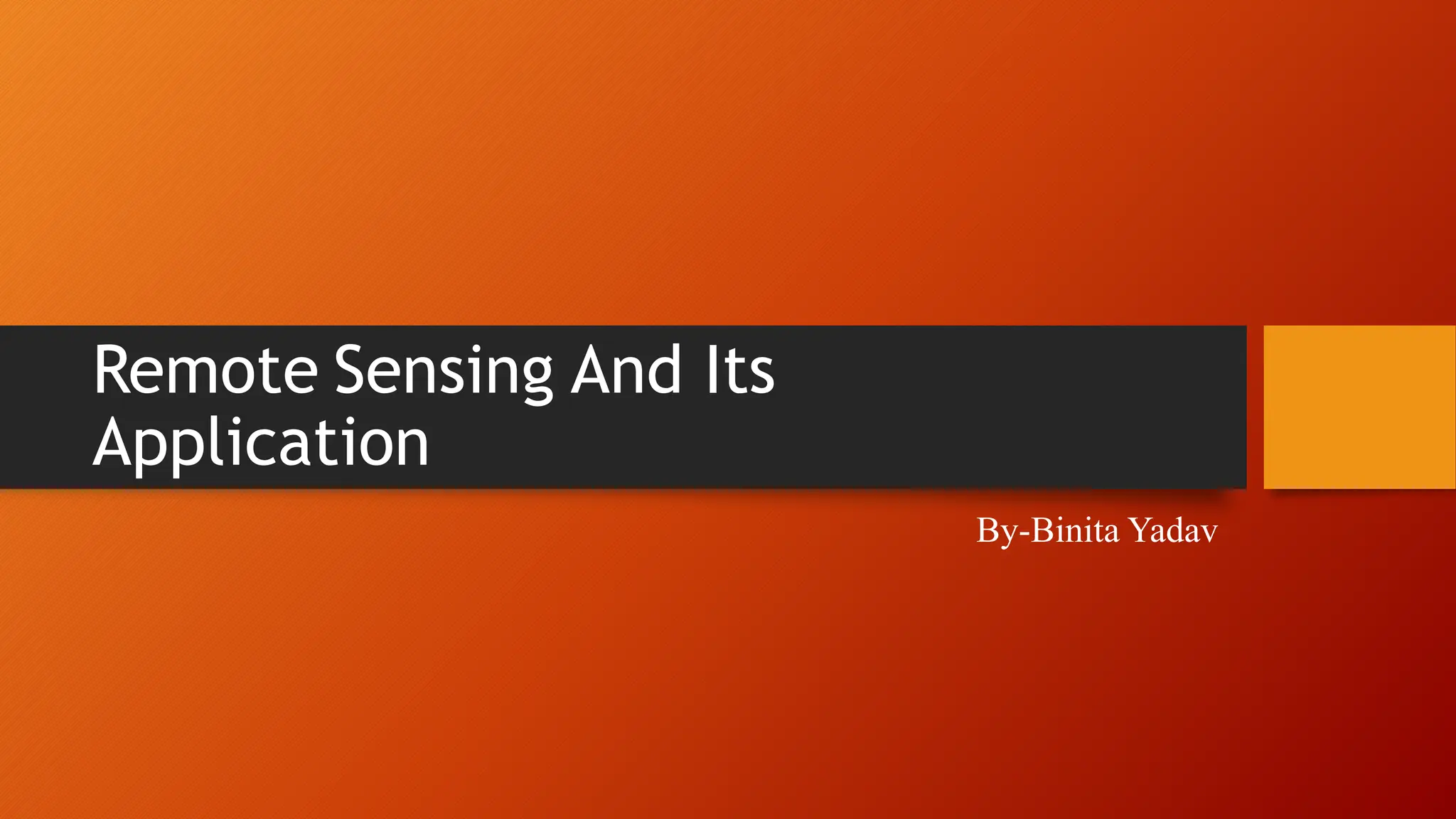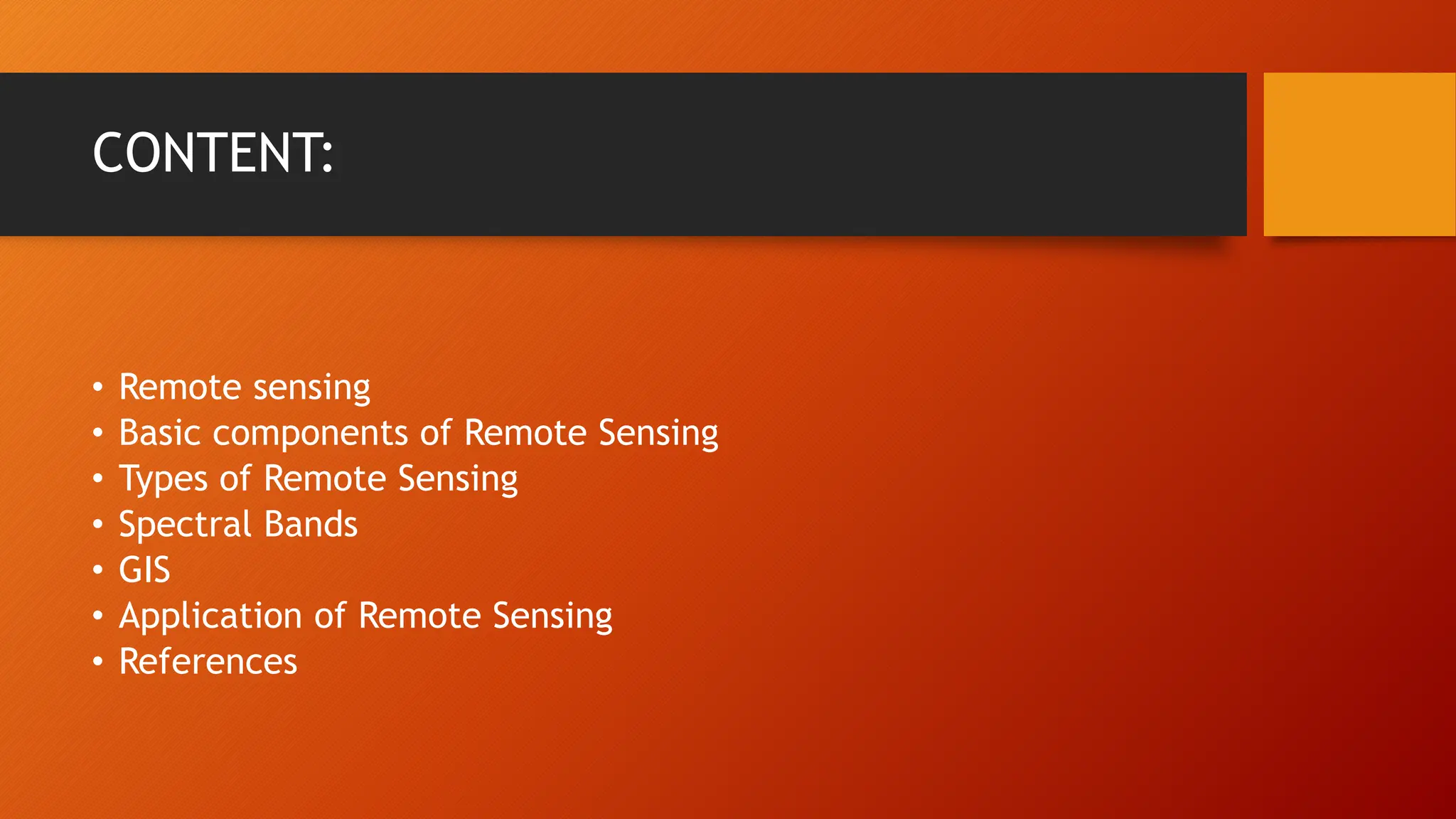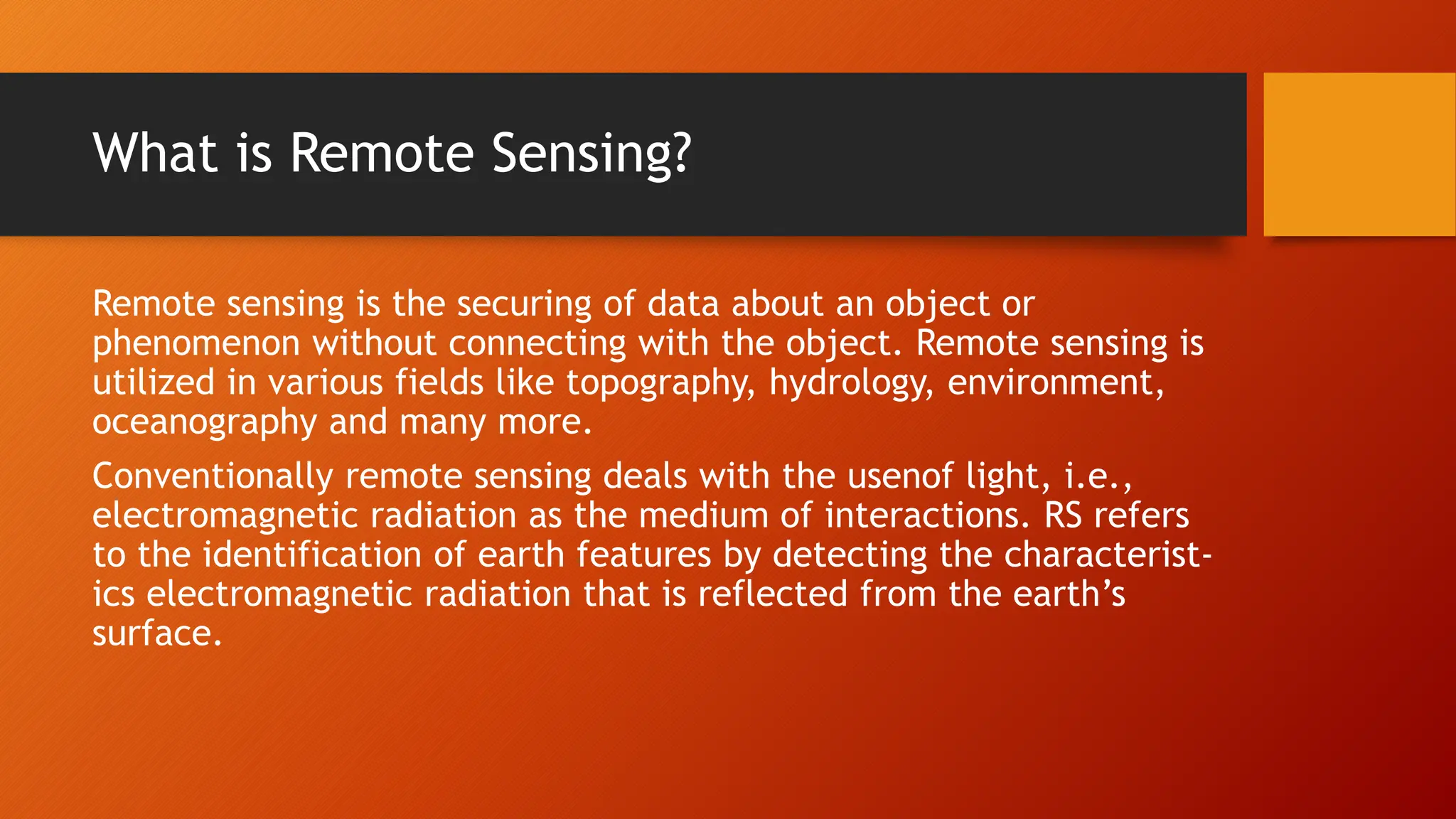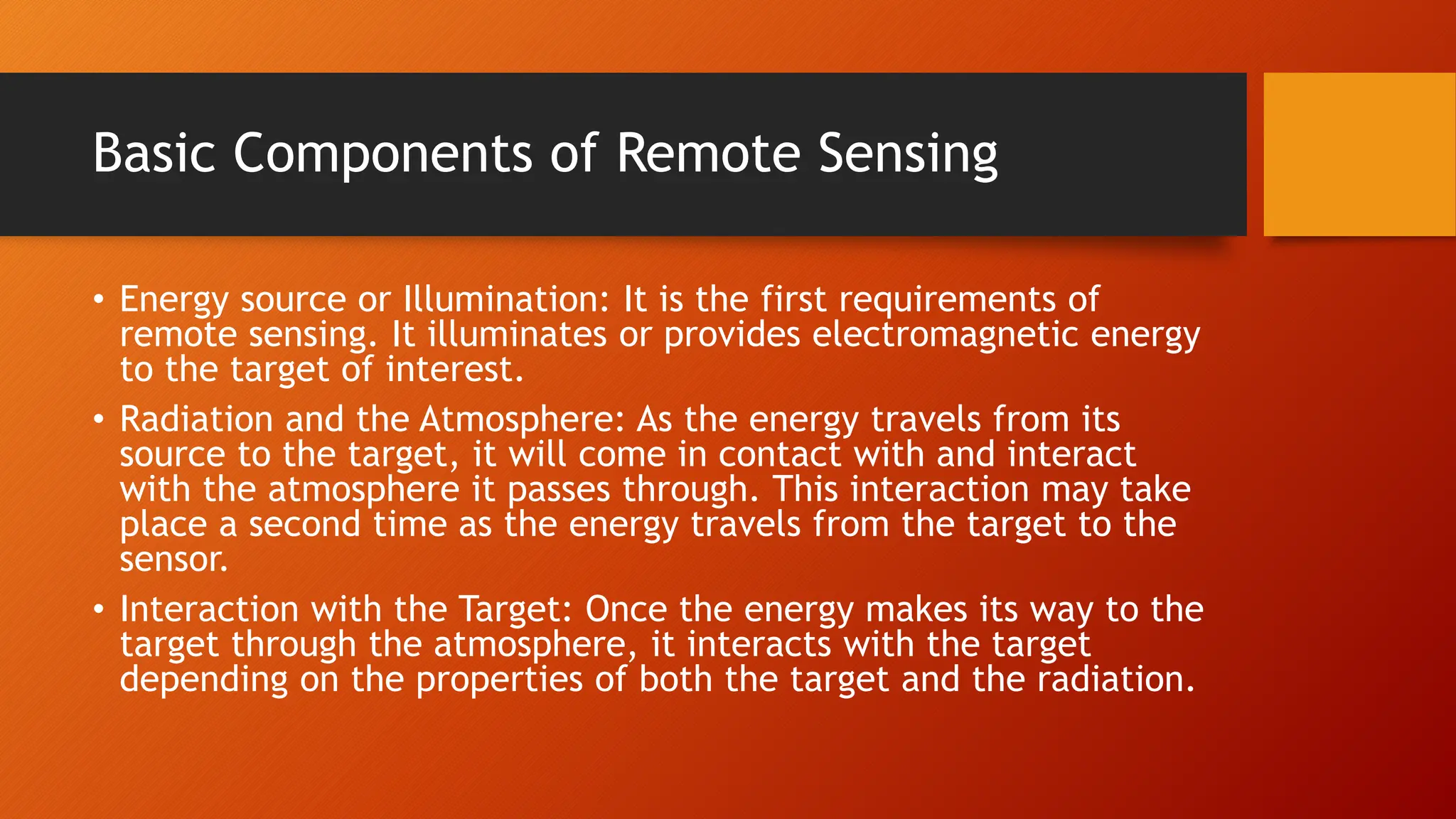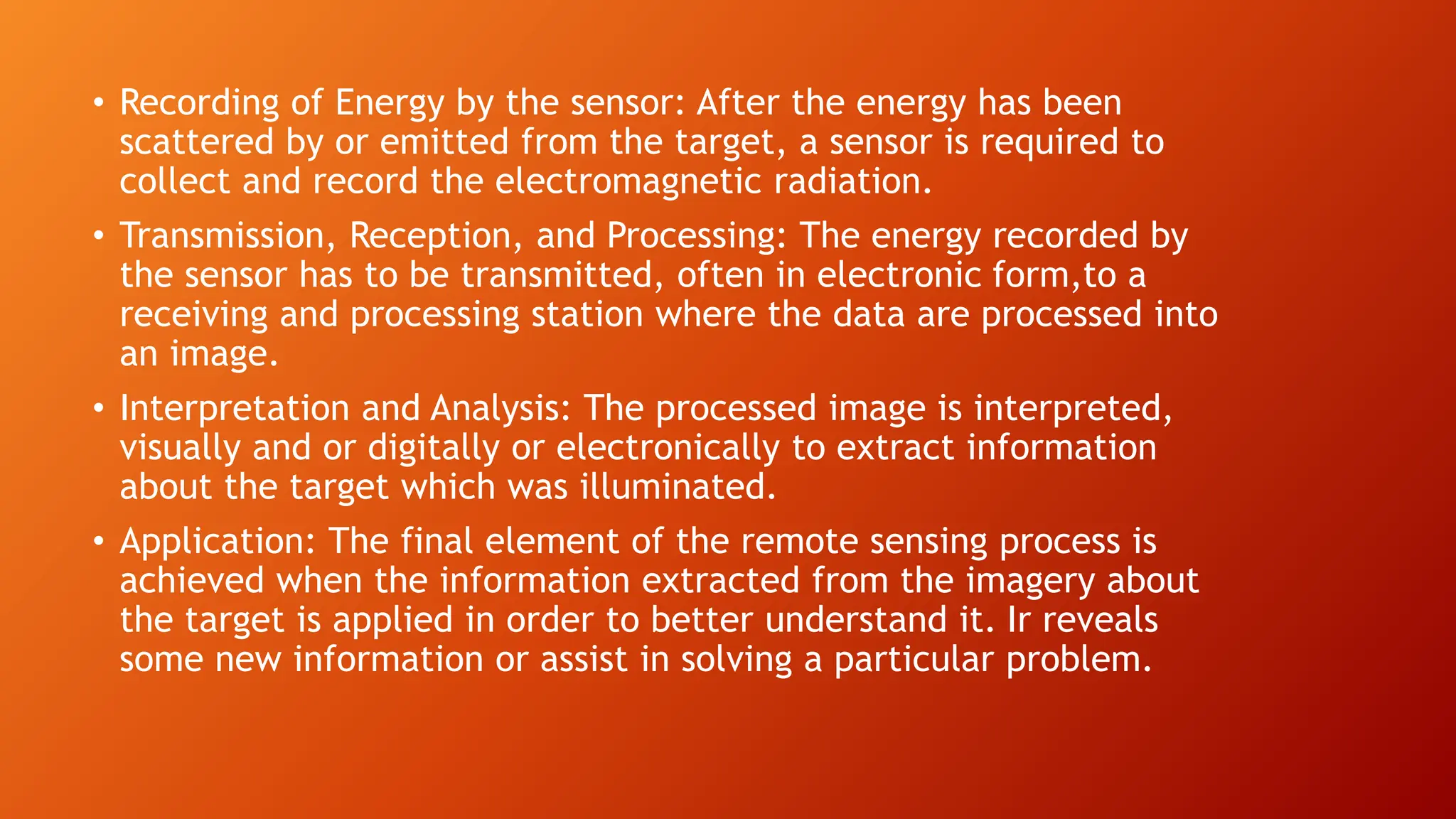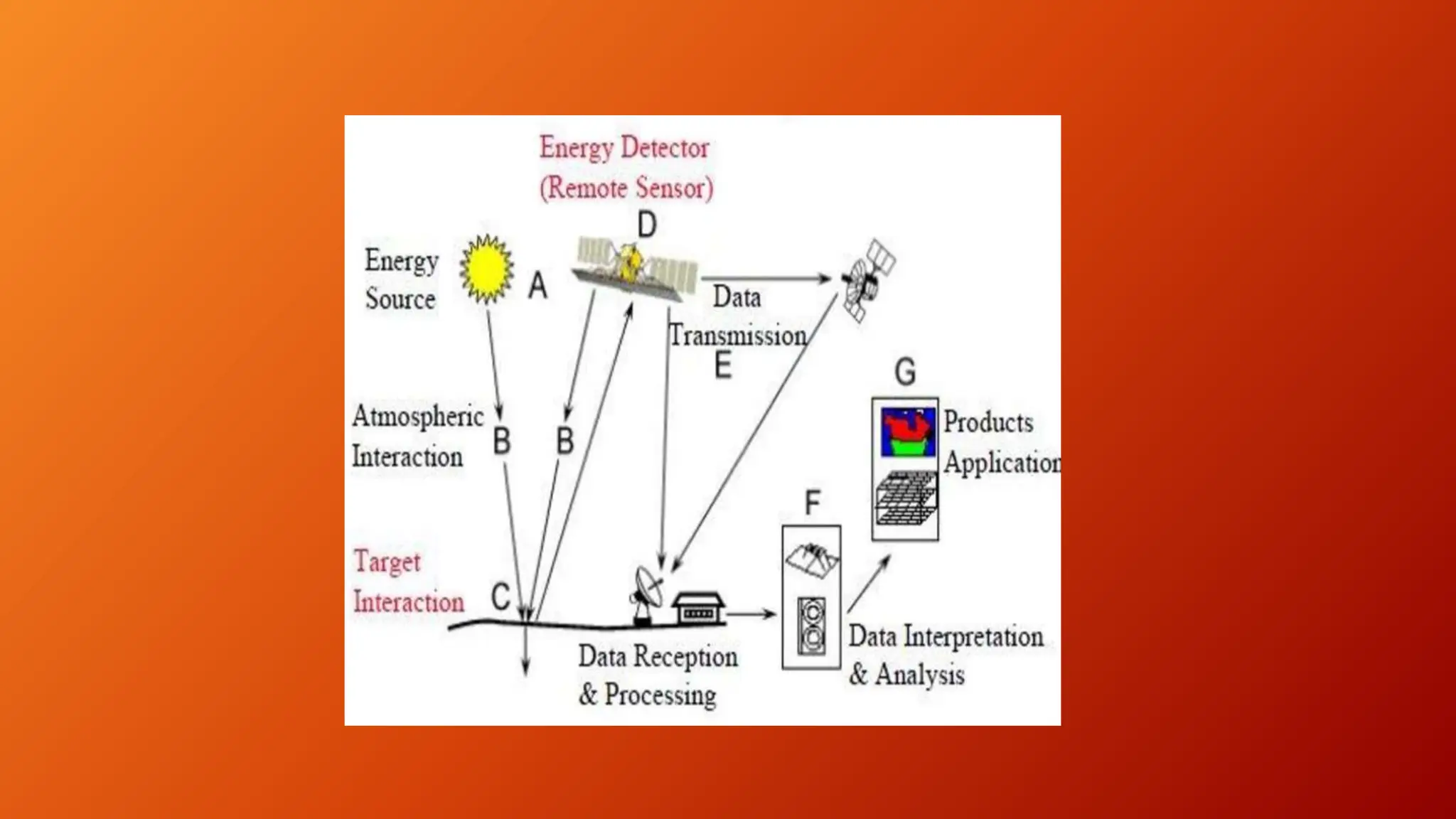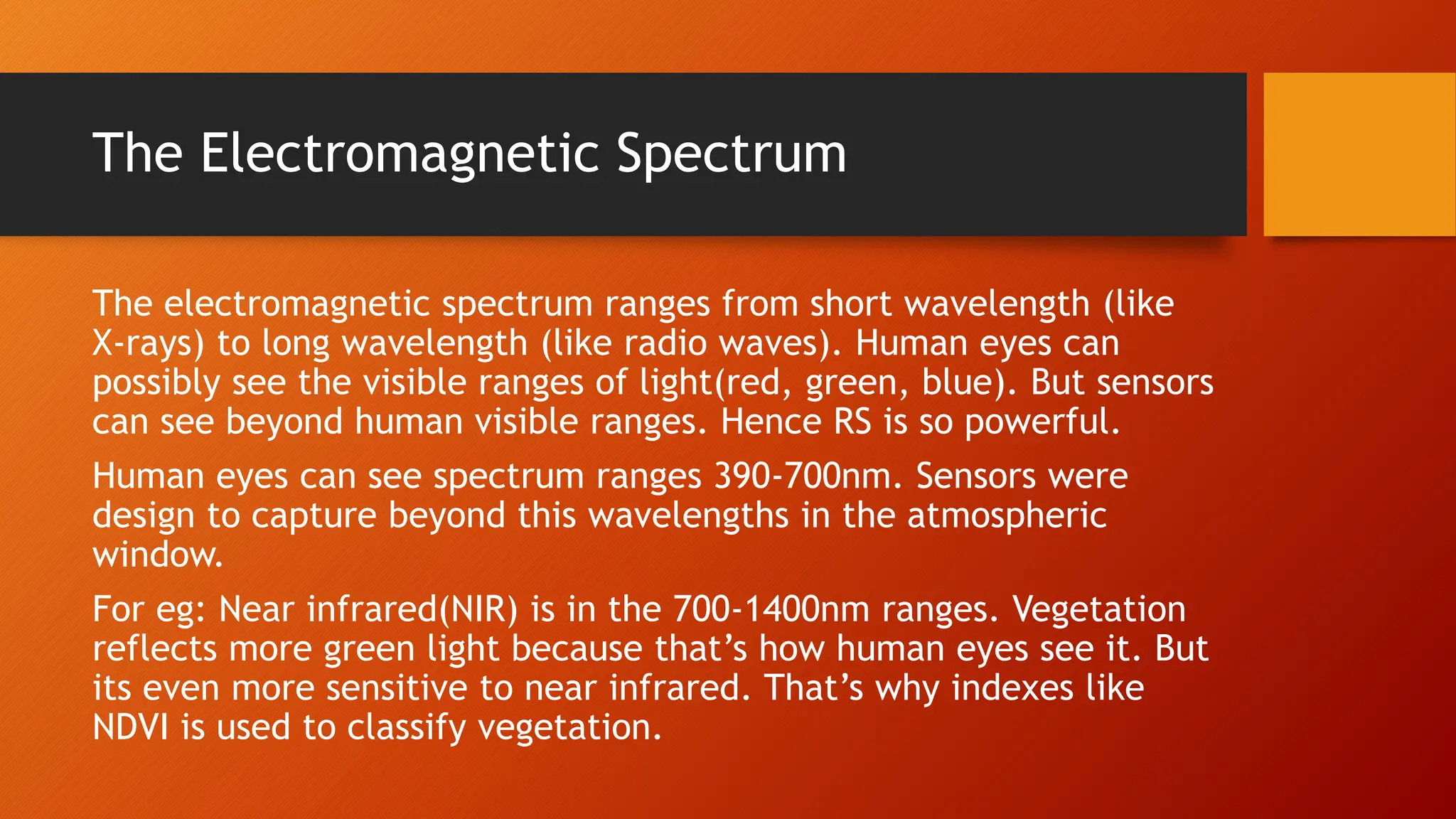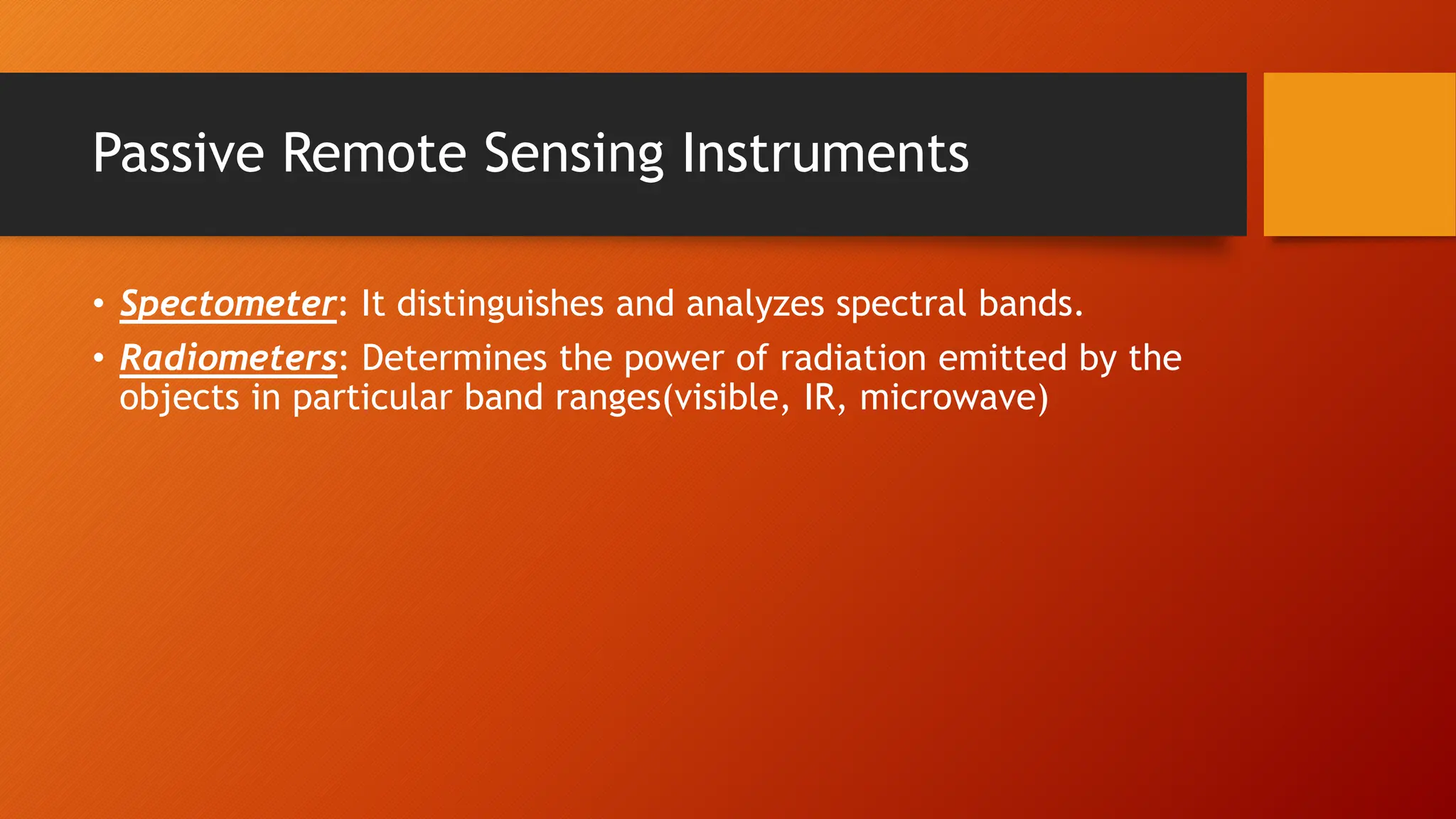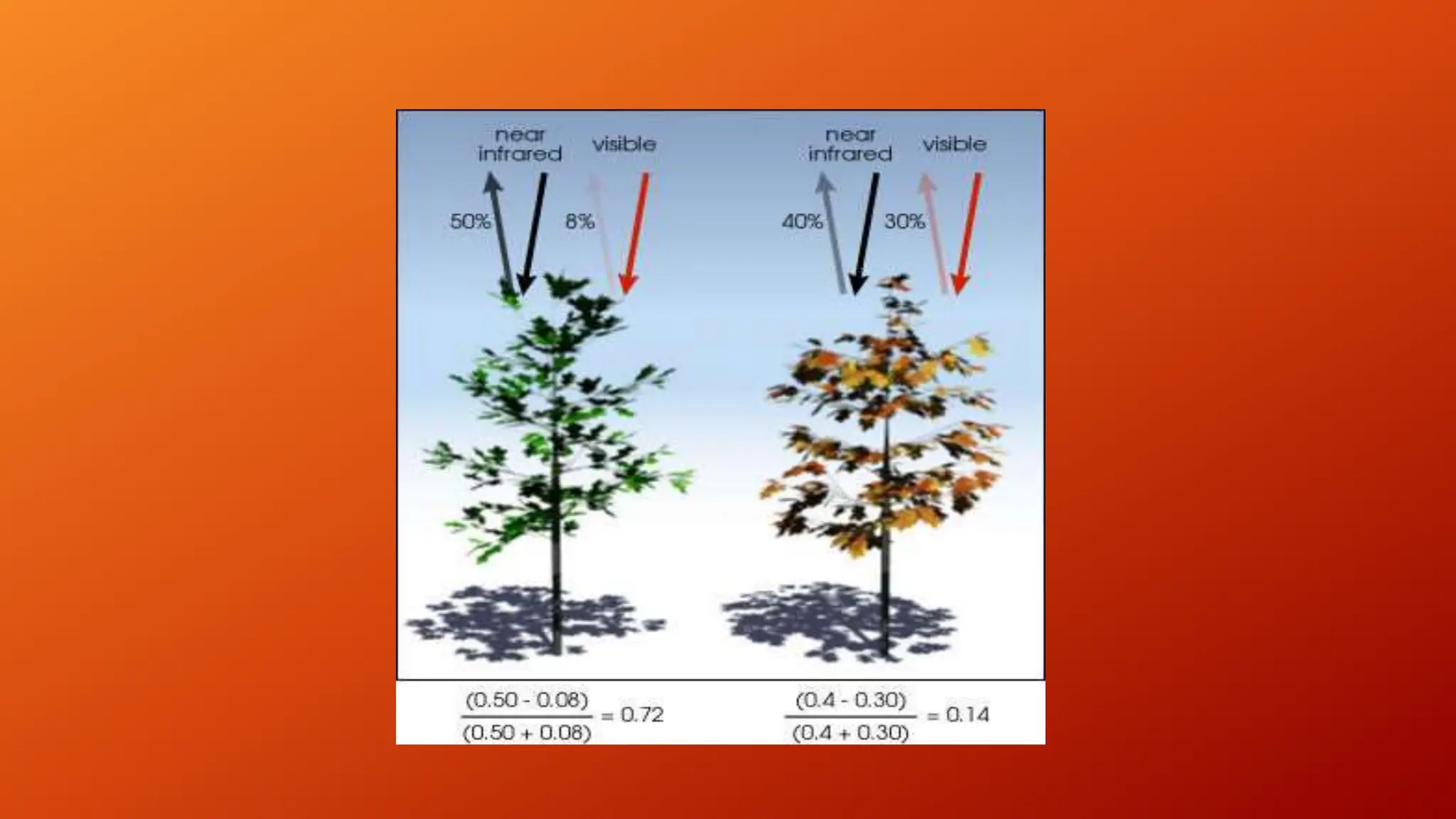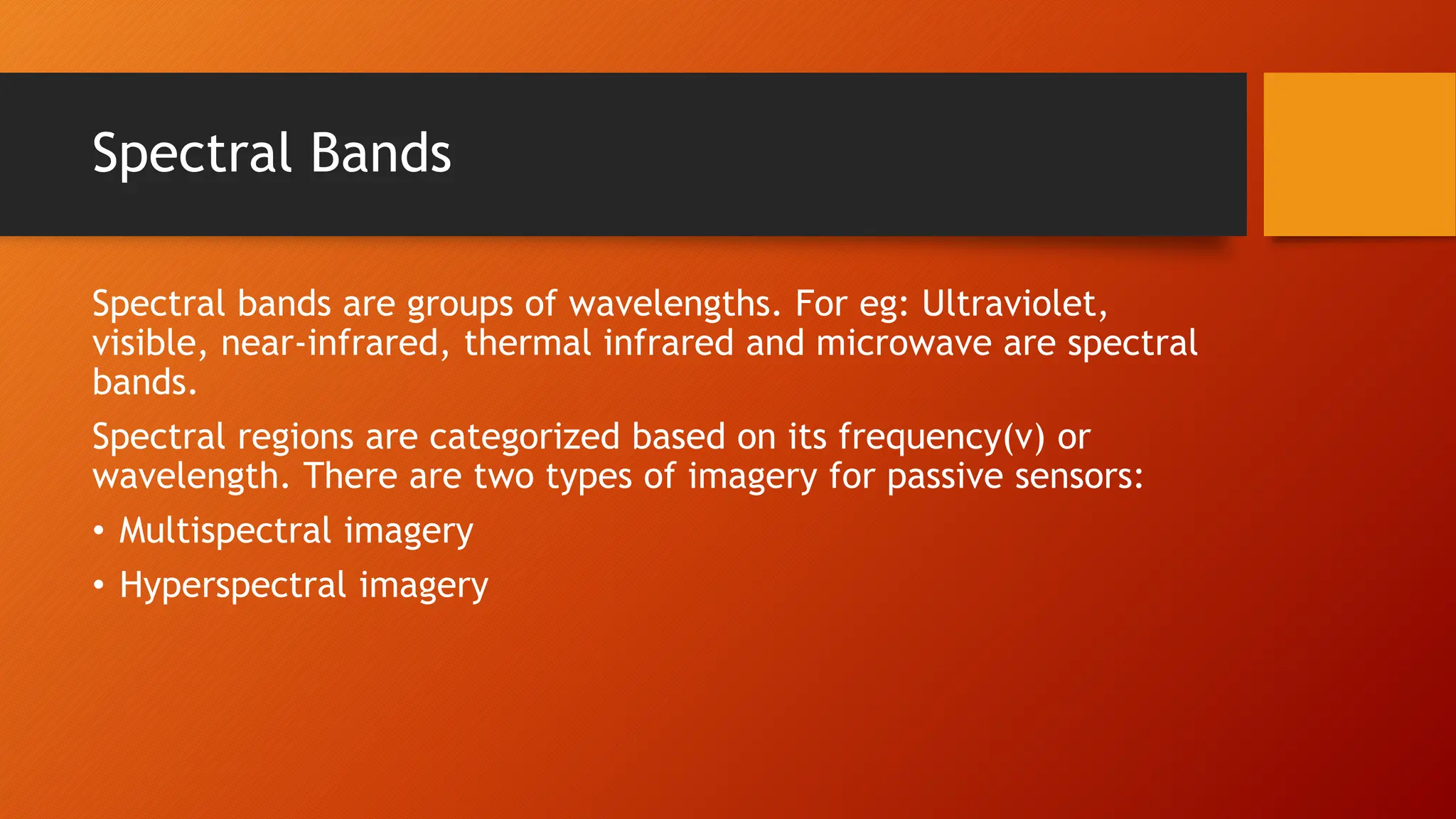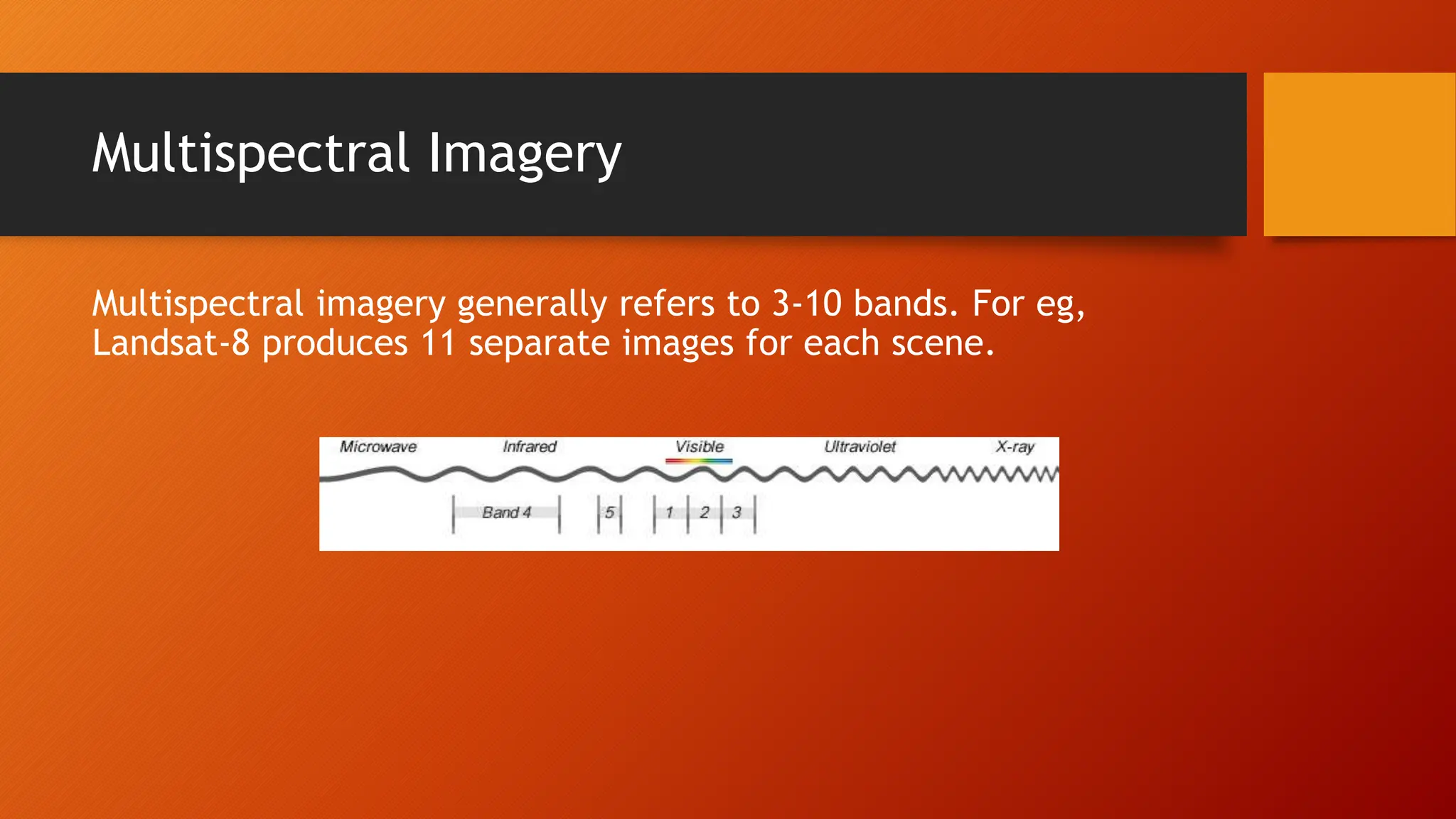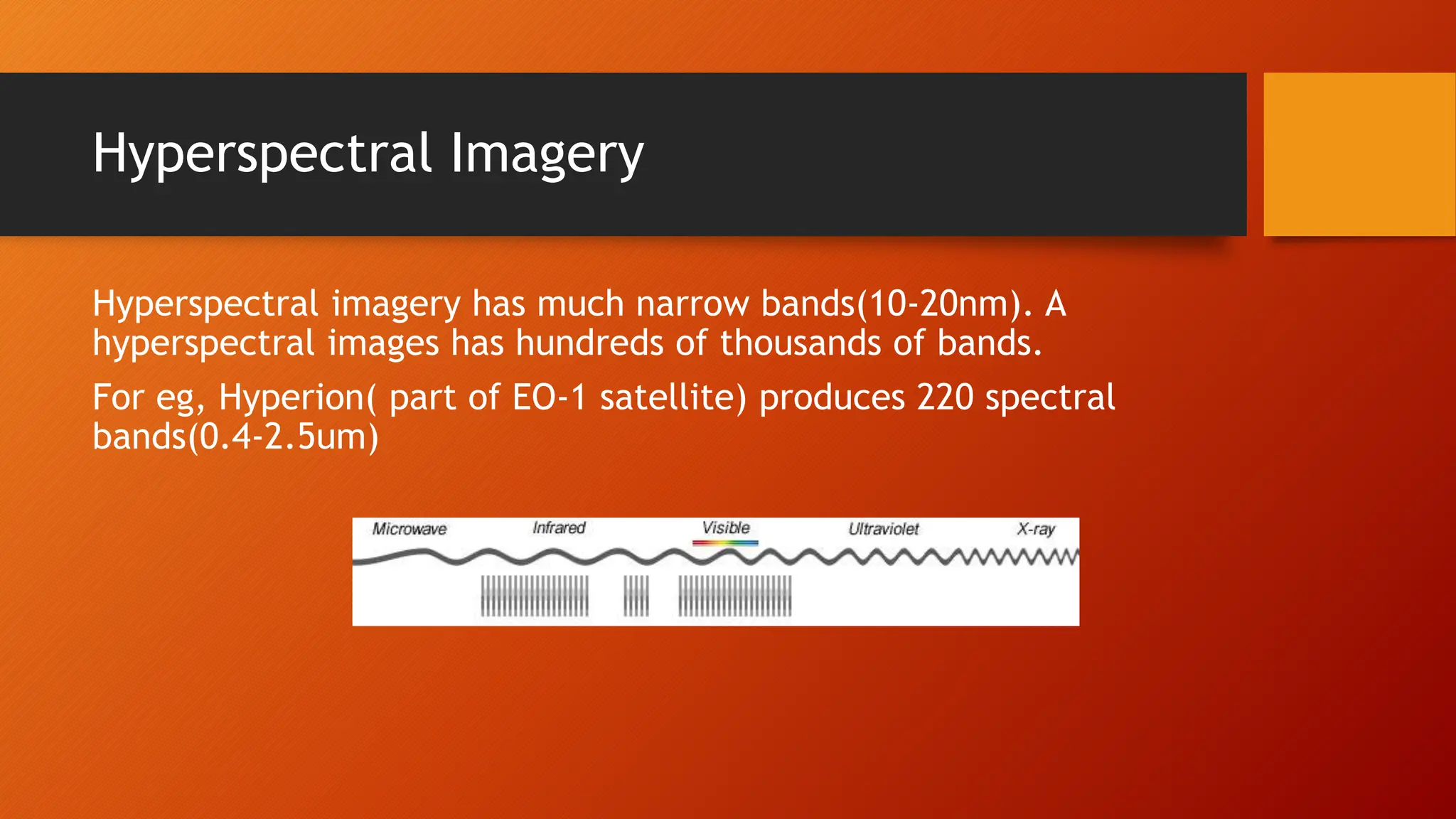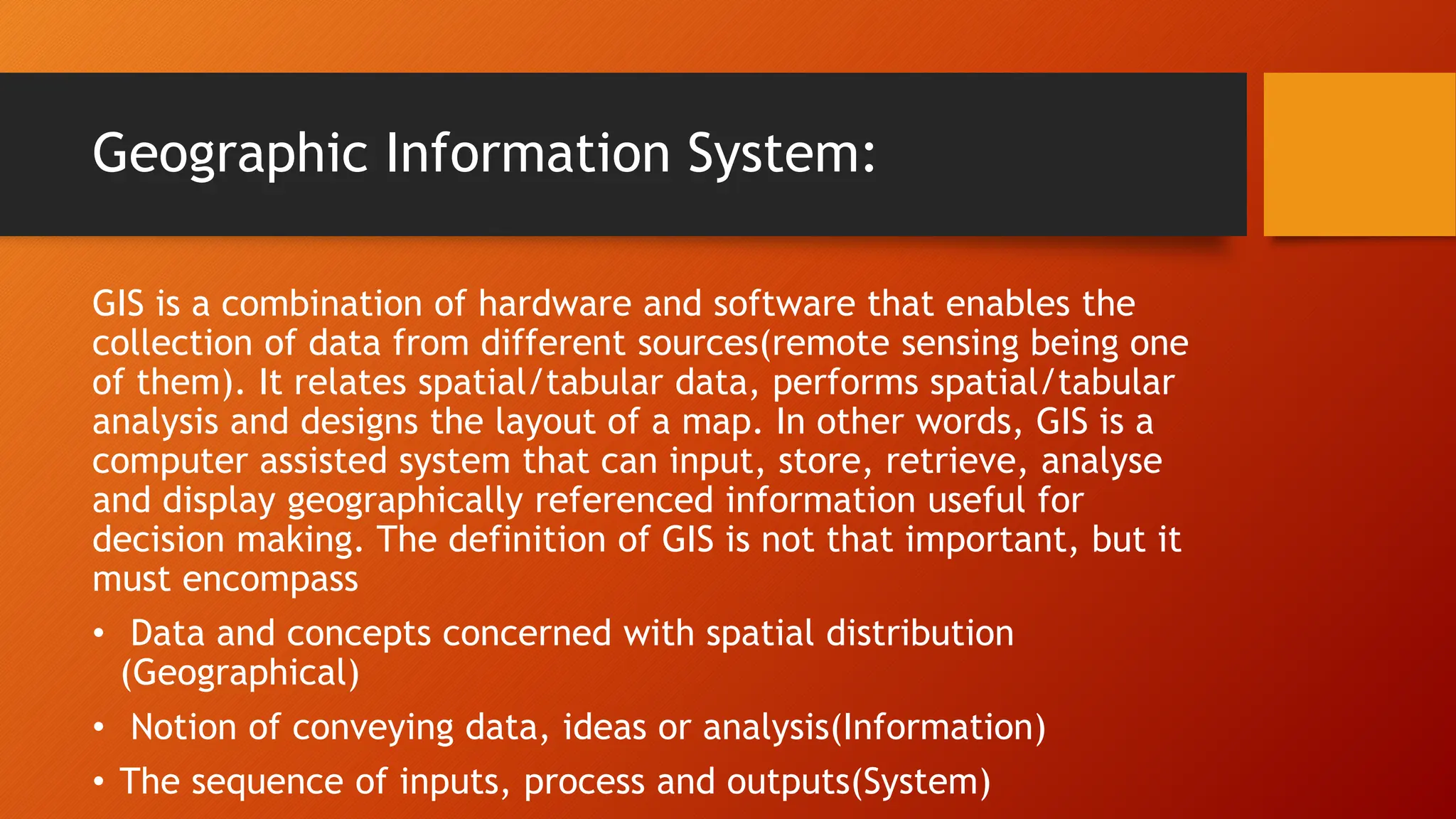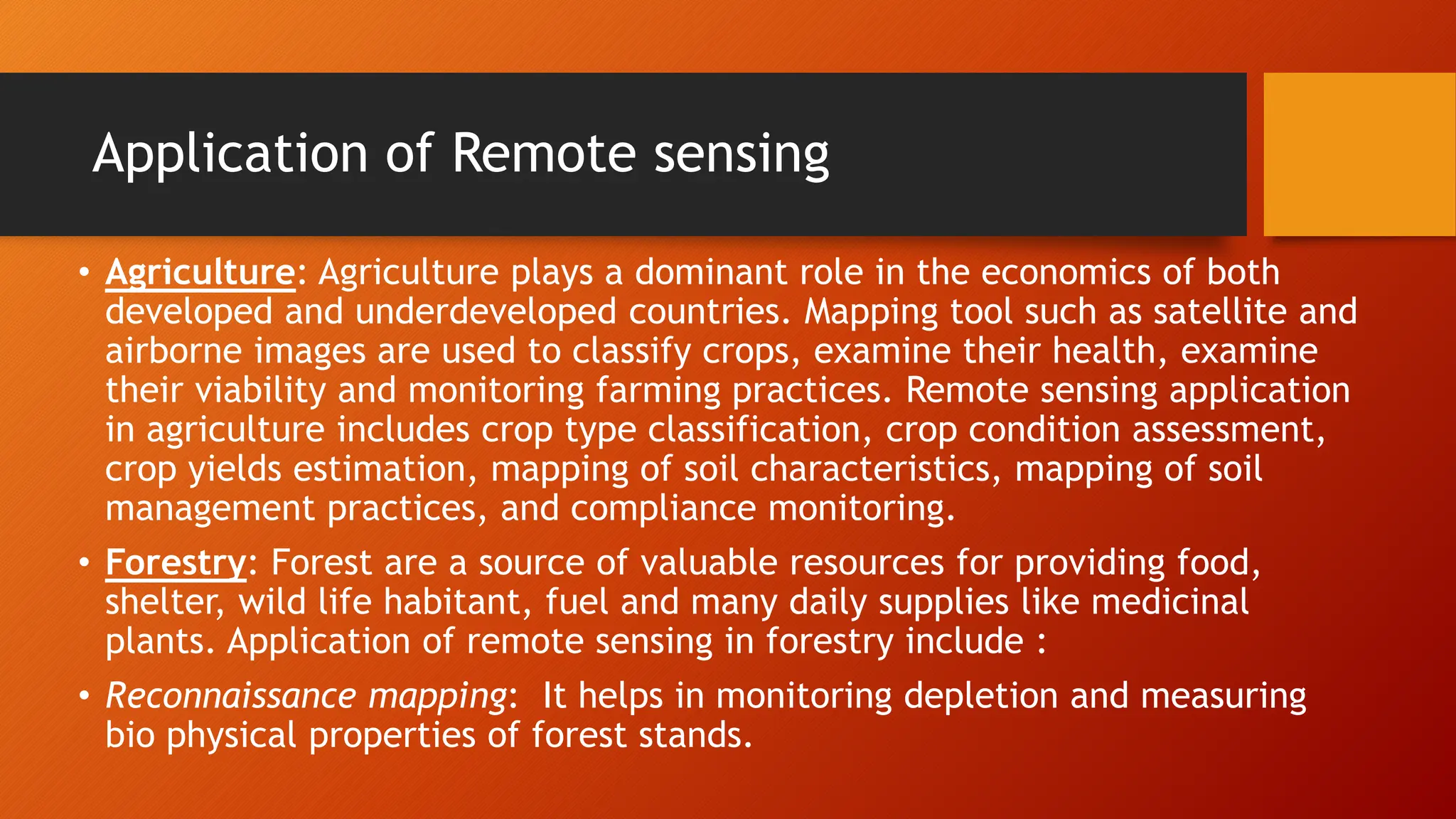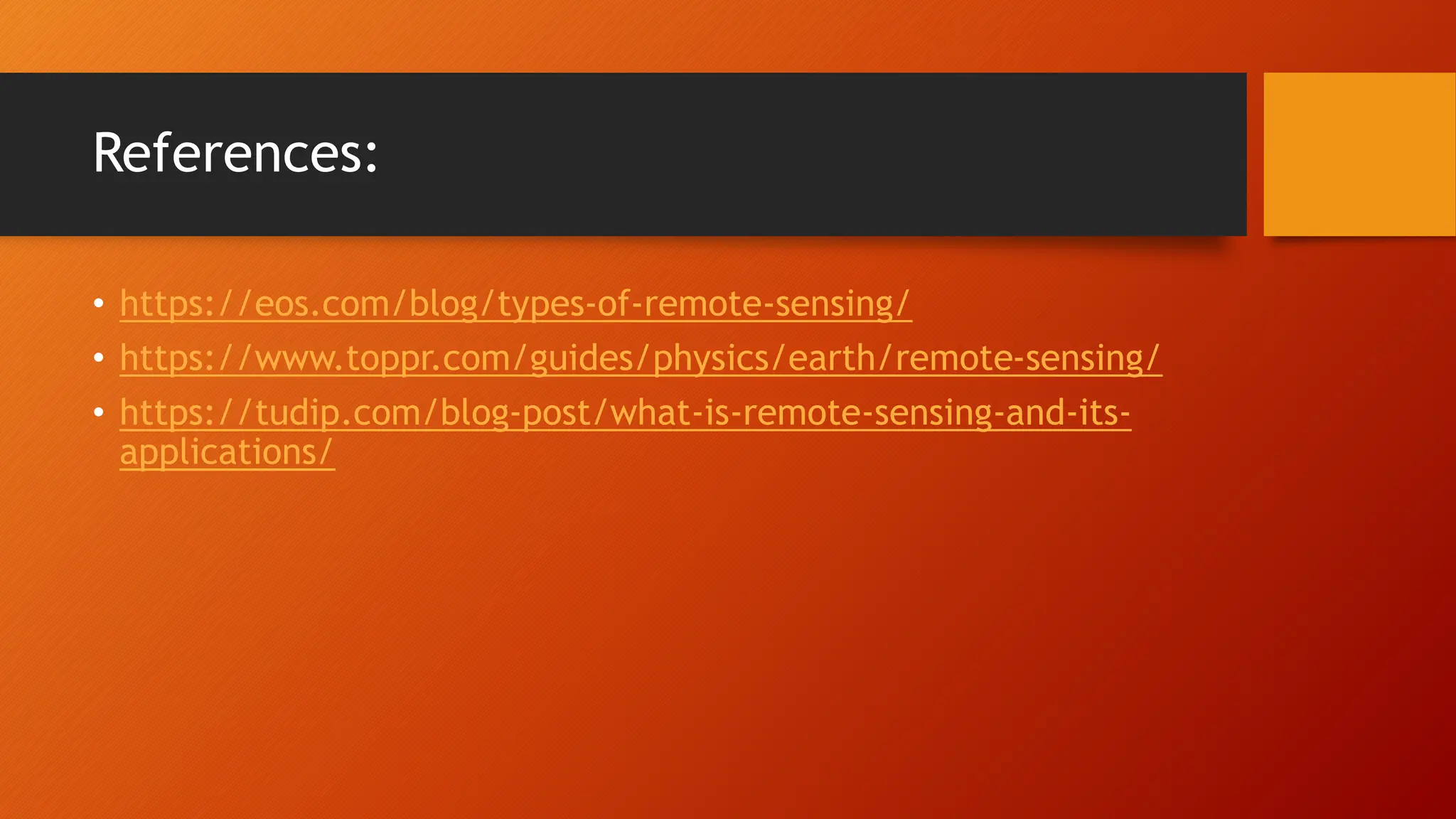Remote sensing involves obtaining information about objects without physical contact. It uses electromagnetic radiation to detect and classify features on Earth's surface. The key components of remote sensing are an energy source, sensors to record radiation, and data analysis. There are two main types - passive sensors that detect sunlight reflected by Earth and active sensors that emit and detect radiation such as radar. Spectral bands divide the electromagnetic spectrum into groupings like visible, infrared, and microwave used by different sensors. Remote sensing has many applications including mapping agriculture, forestry, geology, fisheries, and monitoring the environment.
